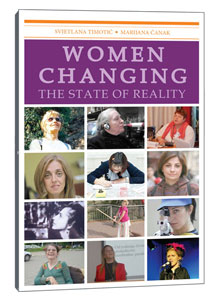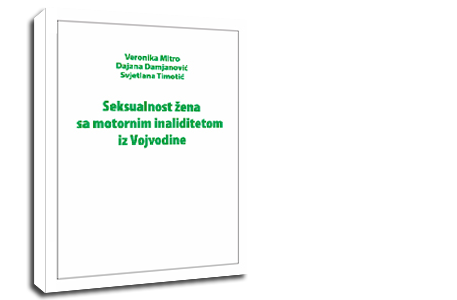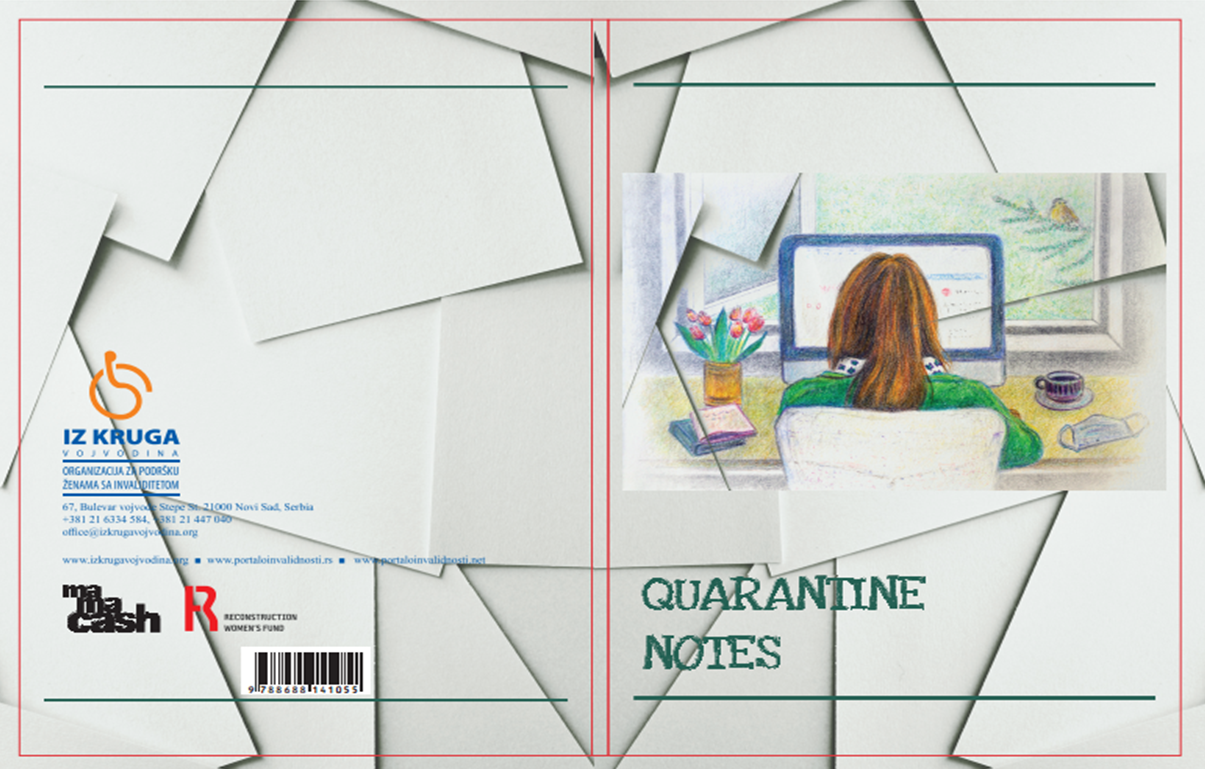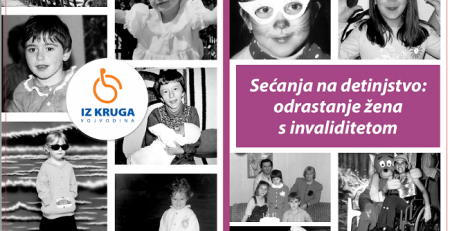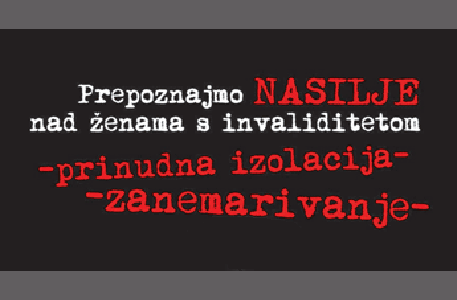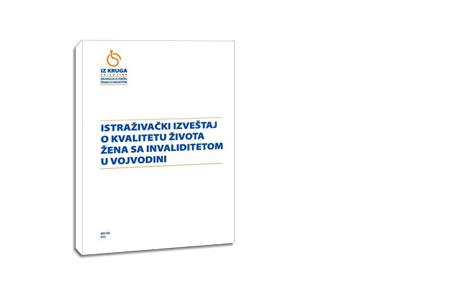History of women’s movement is fragmentary, documented without continuity, with a lot of hidden places, erasure and rediscovery. Marginalized groups’ campaigns have been key to changing people’s perception of the world, yet their contribution easily slips into anonymity or becomes obliterated. Portraits of activist women with disabilities are mostly invisible within the anyway hidden histories, both of those of the women’s rights movement and the movement advocating for the rights of persons with disabilities. The contribution of women with disabilities remains somewhere in between, in a gap or at the intersection of gender and disability, clouded by layers of unacceptable diversity. Through a patriarchal lens, notions of disability and femininity intertwine to such an extent that they inevitably merge at a certain point.
Disability is contextual, sometimes obvious, at other times invisible. Sometimes it changes with a person’s age. Disability is, beyond any doubt, a fluid identity category. A thousand or even several hundreds of years ago, the visual impairment could be a major existential factor. Wearing glasses not only stopped being a life-determining circumstance, but it became completely usual today. Glasses are often not associated with disability, but rather with matters of style or image of intellectuality. If a woman engaged in serious reading several centuries ago, she was likely to end up in an asylum for the mentally ill because such activity was not appropriate for her gender. To the extent nothing short of wearing trousers. Today, an image of the woman in trousers denotes nothing subversive, except in regions of the world where burka is the only appropriate denominator of femininity. Femininity, just like disability, is variable. In certain chronological context and cultural constructs, being a woman meant having a congenital disability, for women’s bodies are weak, brains inadequate, ovaries determining. Women, persons with disabilities and children used to share the same social status at cross-section of an era – the status of incompetence. Paradoxically enough, perceivable disability opened a way into the academia and social engagement beyond the kitchen to some women. Social expectations from a woman with a disability are different – supposing that she is not fit for the role of a wife and mother, the society yields other existential options to her. One repressive measure thus invalidates the other, opening traditionally male spaces to Mileva Marić, Rosa Luxemburg, Helen Keller…
Disability is an identity aspect significantly influencing a woman’s life experience, yet centuries of suppositions, stereotypical perceptions, irrational fears and stigmatization – both that of disability and female gender – cloud the authenticity of that experience. Women with disabilities are often a topic of other people’s writings, while their stories end up in extremes, from marginalization to becoming heroines and back. Without acknowledging the diversity of their character, the background of the seeming admiration is often nothing but pure pity devaluating the contribution of women with disabilities. A series of interviews with the Novi Sad women activists for the rights of persons with disabilities is a gallery of women’s portraits of those who keep changing our reality. This collection of interviews does not only document a part of activism history of women with disabilities, but it creates a space for telling that history in authentic women’s voices. These personal stories of women activists question also the gender aspect of the movement advocating for the right of persons with disabilities by asking: who is the least equal among the unequal? The experience of women activists with disability, on one hand, undermines a stereotypical image, presenting women with disabilities as the movement’s power-bearers, change-initiators, strong and proactive. On the other, they keep working from the shadow, achieving their goals quietly and with no glory, remaining outside of positions of power, insufficiently visible and indistinct. Their stories are an account of many names: those of their predecessors, women who introduced them to the movement, their women colleagues, co-workers, assistants, mentors and supporters, motivating them and pointing to the common goals… Any of those names dispersed across these stories could have been a valid reference for yet another chapter in the history of the movement or, quite the opposite, one of its unfathomable segments. So far, the history of activism of women with disabilities has largely been an oral one. Invisible beyond their own domain, these activist women keep memories of each other alive, respecting the synergy effect of their team efforts. Some of the interviews in this compilation appeared for the first time commemorating the passing of Lepojka Čarević Mitanovska, honoring her enthusiasm and work inspiring many women’s activist spirit.
Women activists’ inspiration, typically enough, comes from people and their interpersonal relationships, their fates in the broadest sense of the word and their own position among them. Some of the interviewed women are members of traditional associations of persons with disabilities; others are in NGOs or their own organizations. Recalling their first activist engagements, they tell a story of their own individual development, providing also an insight into a broader picture and a cross-section of the state of affairs within the movement. Without a tendency to measure achievements, just an incidental overview is enough to reflect on what has changed in the image of the city, from the first project of the contemporary women activists with disabilities to the present. Positioned on a timeline, each of the interviews begins with women activists’ childhood recollections, ending with hints on what each of them would like to be remembered for. Based on their most personal accounts of how they used to imagine their present selves when they were little girls, we could debate if women activists are born as such or they become (women) and/or activists later on. Each of the interviewed women activists reveals her own success formula, irreplaceable ingredients of successful social action of each of them being passion for life, perseverance, patience and tolerance, pursuit of ideas, trust in people and responsibility, that towards oneself and the others. For women with disabilities activism is a multi-layered category with multiple meanings. Being a woman activist might denote bringing about a change, dealing with the inevitable, being optimistic, introducing balance, accomplishing a feat, putting knowledge into action, setting paths for the ones to come, doing what needs to be done, implementing an action leaving a trace, improving one’s social environment, giving yourself.
Failing to recognize those who have given themselves before us is cutting ourselves off from strength, diminishing continuity of the change bringing us back to the starting points over and again. In order to know where we are heading, we must inevitably reflect on where we had come from in the first place and bear in mind that nothing that it happening to us is not for the first time – it has all happened to someone before us. By respecting our predecessors, we activate their qualities within ourselves, while by honoring their contribution we empower our own. This is why it is important to decode, record and remember the history of activism of women with disabilities.
Marijana Čanak
You can download the electronic version of the publication in PDF format.
